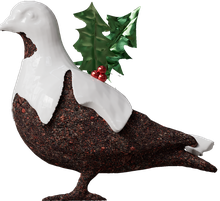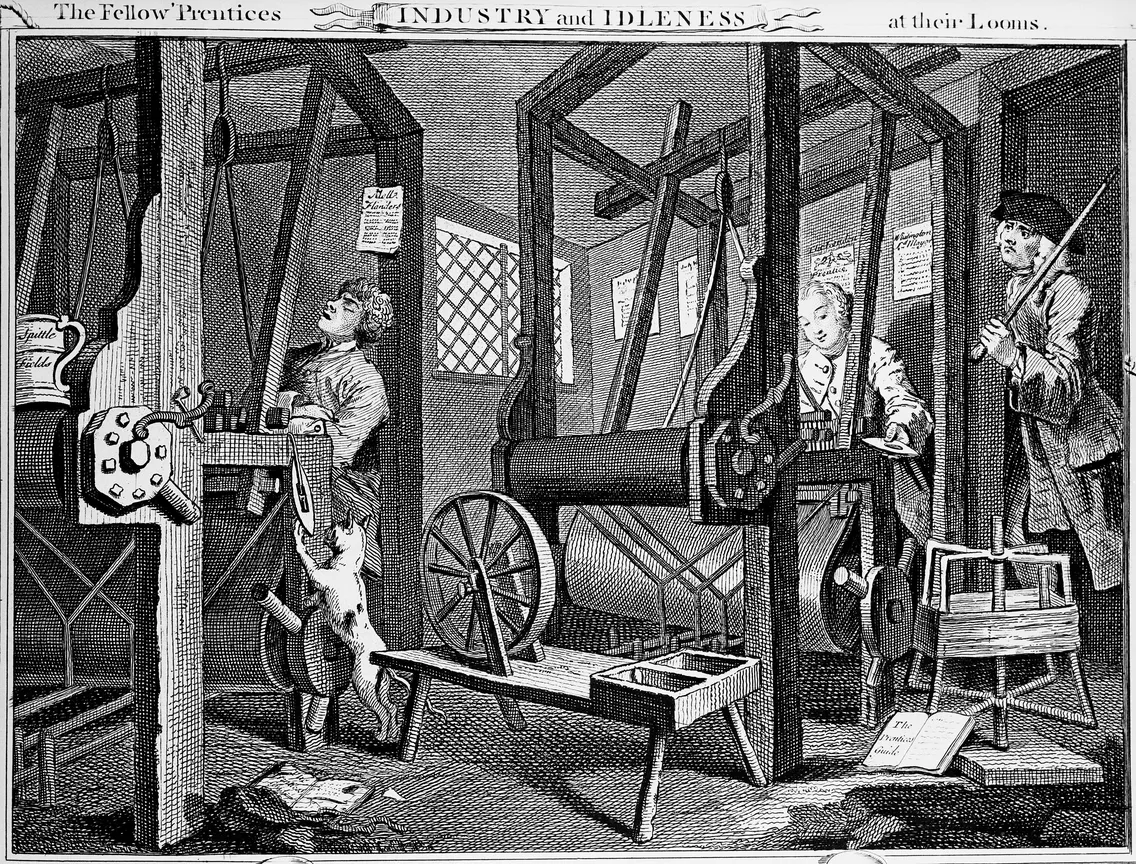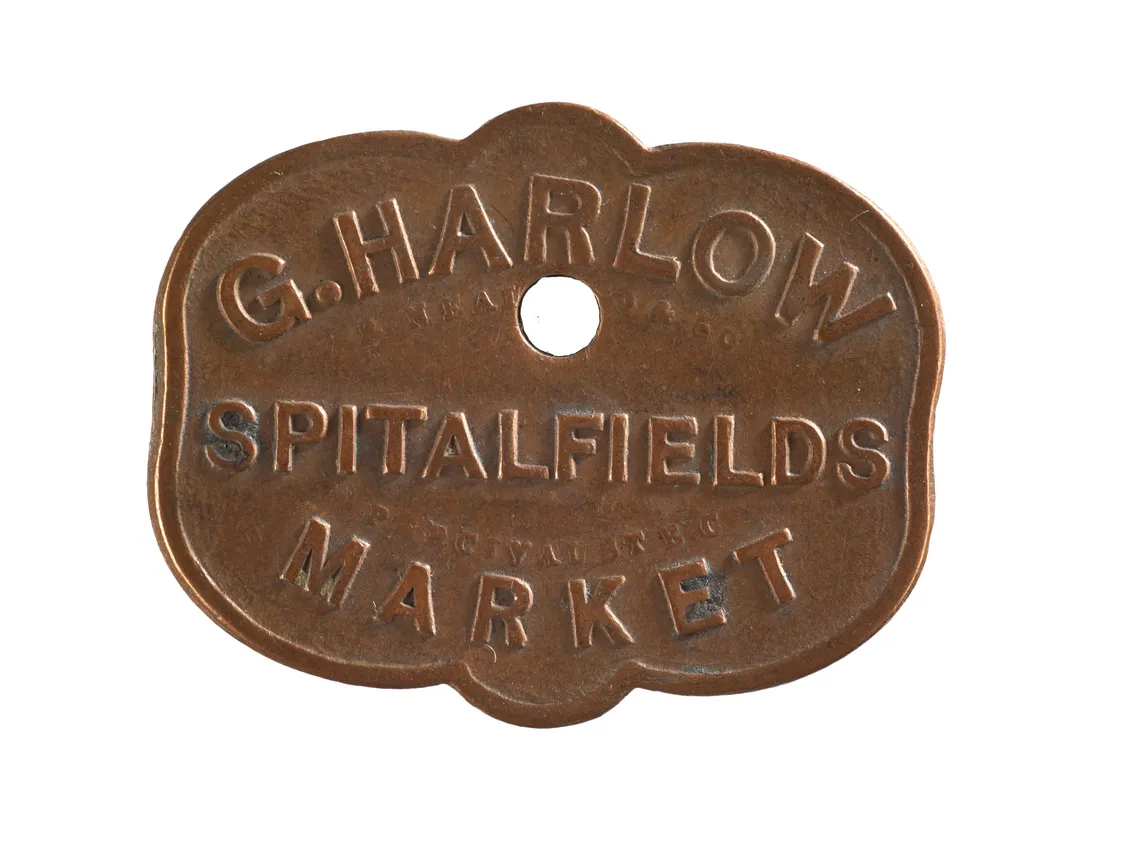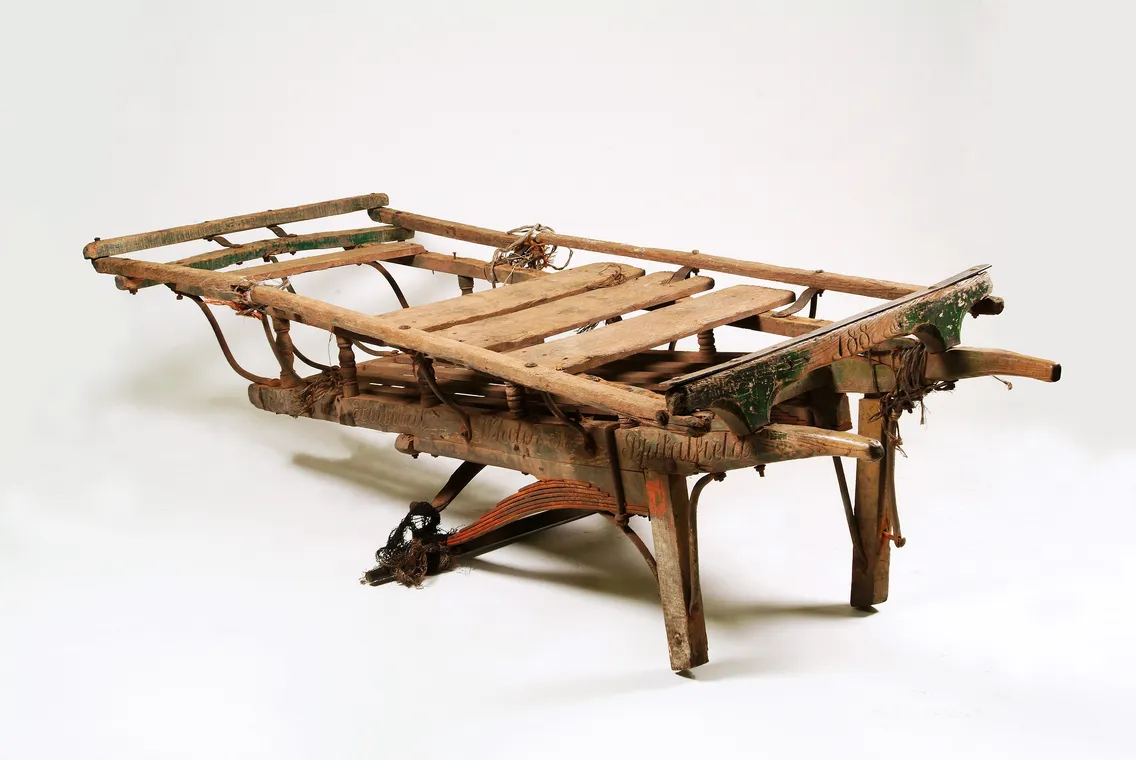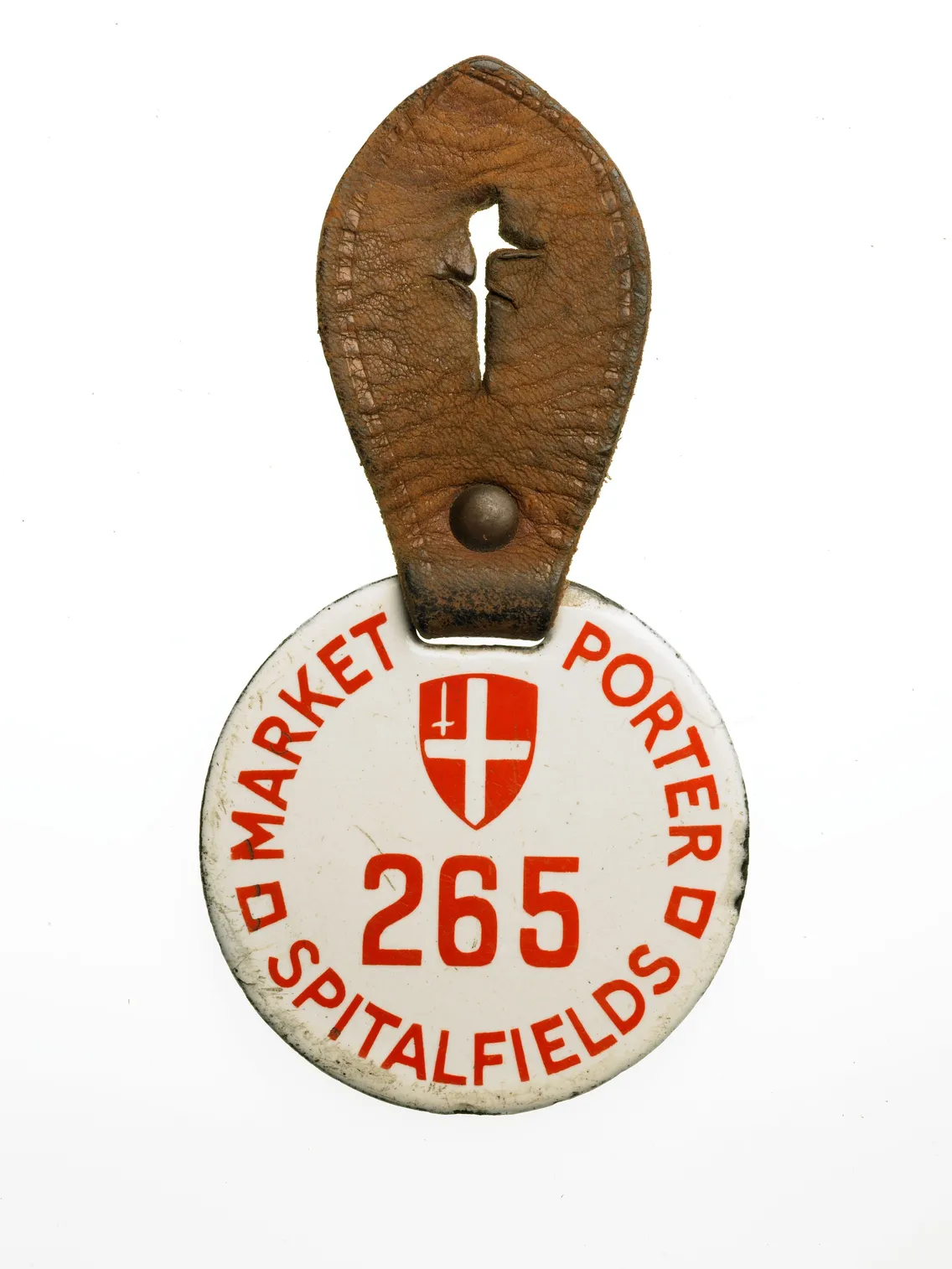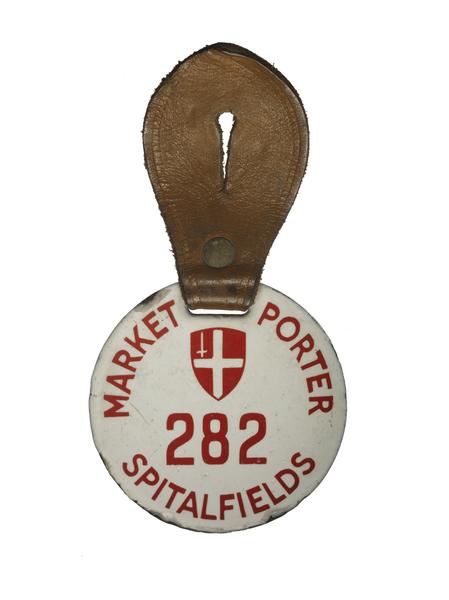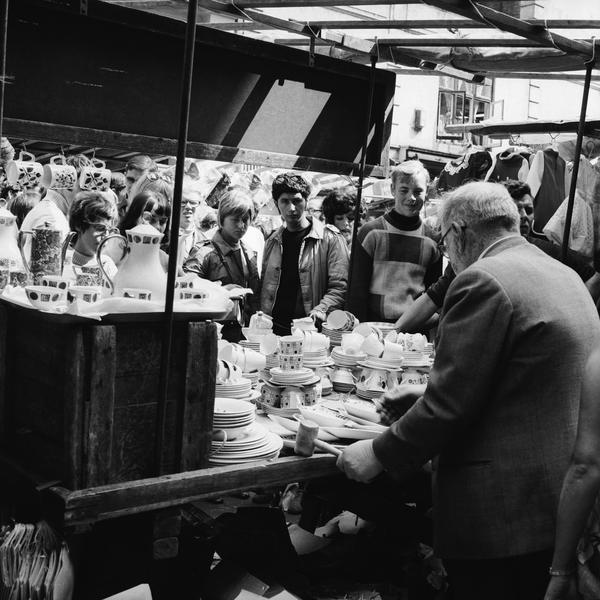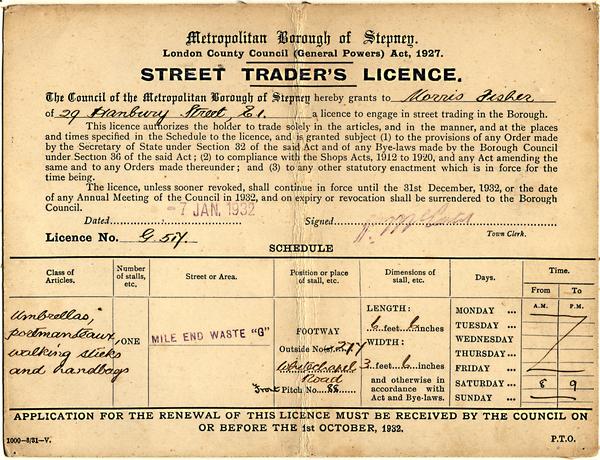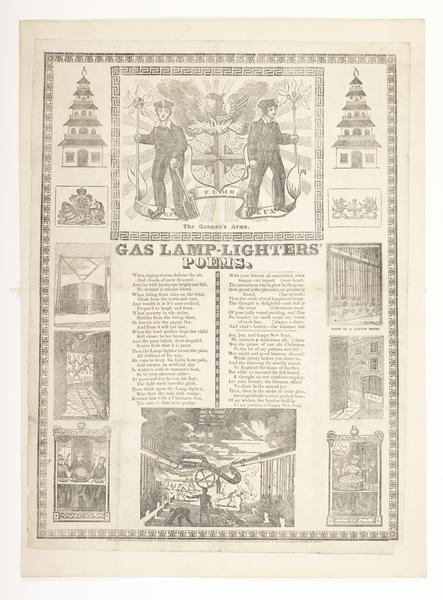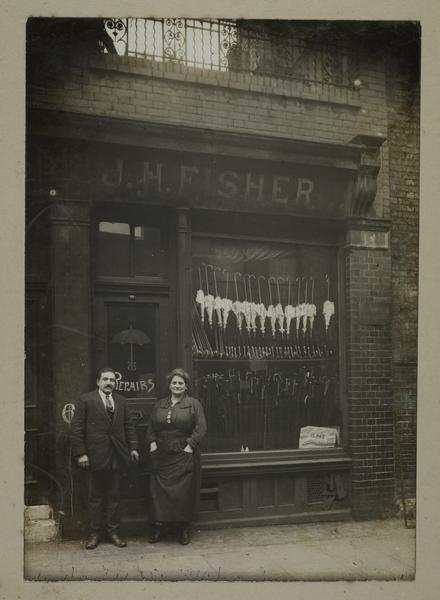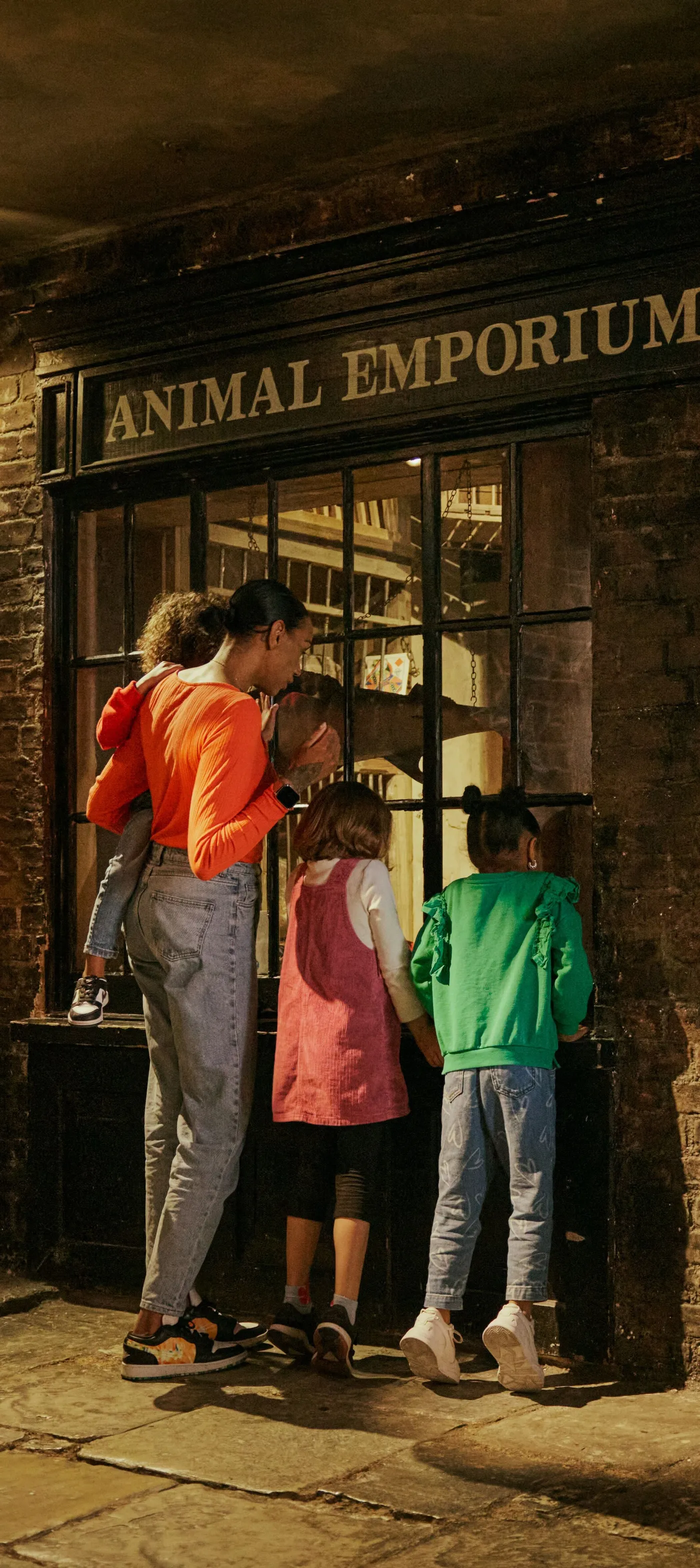Spitalfields Market: 400 years of feeding London
What started as a small community market has now evolved into a swanky tourist destination in Tower Hamlets.
Spitalfields, Tower Hamlets
Since 1638
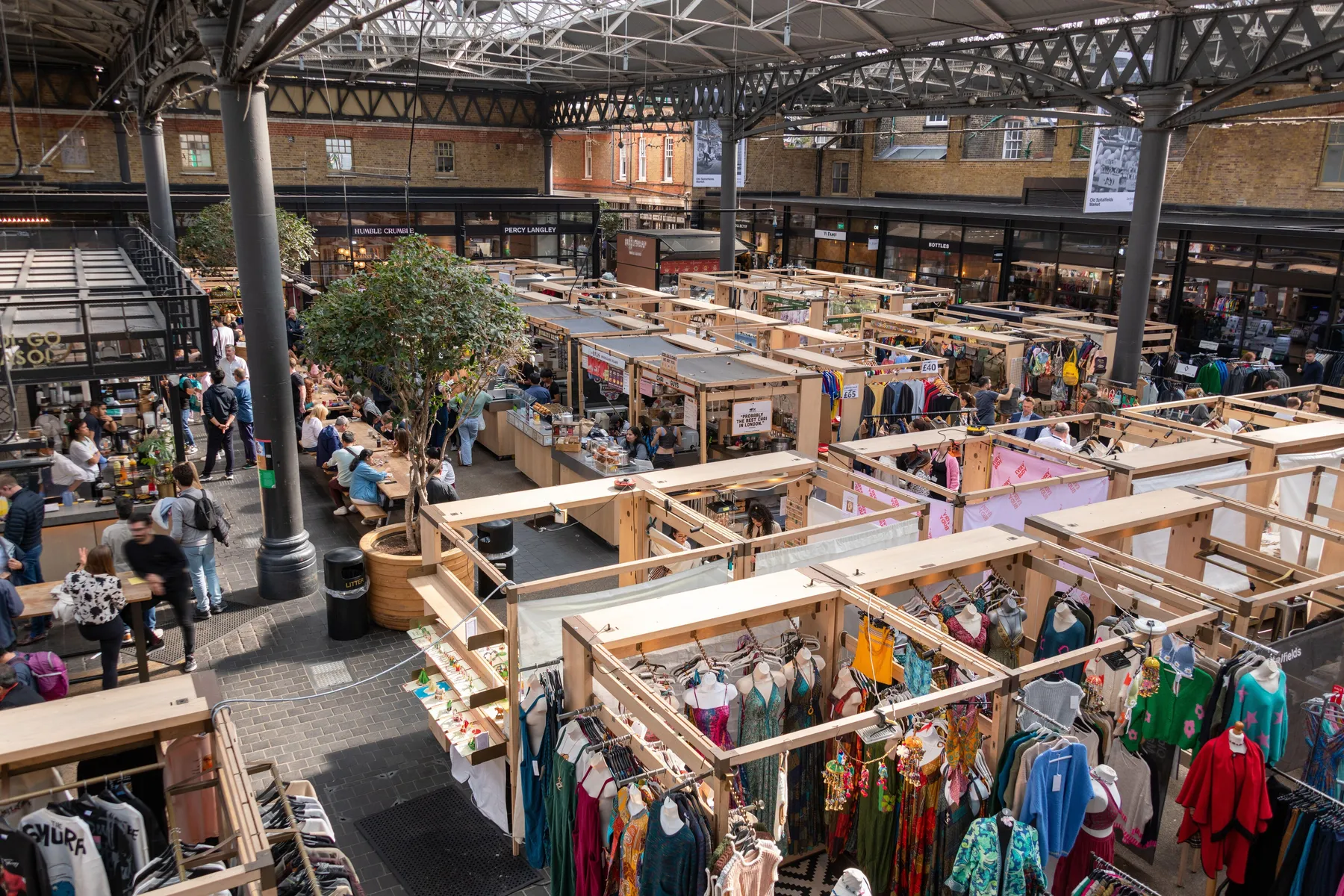
The Old Spitalfields Market site has undergone multiple makeovers over the centuries.
Fruit, veg and the ever-changing East End
Spitalfields Market in Tower Hamlets was a rural trading site in open fields in the 1600s. It was named after the medieval hospital of St Mary Spital, historically referred to as Spittel or Spitel. Archaeological excavations on the site between 1991 and 2007 revealed cemeteries stretching back to Roman times.
The market was first licensed to sell produce in 1638. As the wider Spitalfields area grew, it attracted waves of immigrants to the area, including French Huguenot weavers, who made ‘Spitalfields silk’ a desirable global commodity.
Spitalfields Market has reinvented itself a number of times. It went from serving locals fresh produce to becoming a major wholesale fruit and vegetable market. In 1991, the wholesale business was moved east to a purpose-built space in Leyton, Waltham Forest.
Today, the fruit and veg stalls have been replaced with restaurants and upscale shops, which share the lively market with stalls selling art, clothing and antiques.
The medieval priory and hospital of St Mary Spital
In 1197, the Augustinian priory and hospital of St Mary Spital was founded on the outskirts of medieval London. Augustinians were Roman Catholics, and this was one of the city’s first religious houses.
Over time, ‘spital’ (for ‘hospital’) and ‘fields’ (referring to the surrounding open fields) merged to create ‘Spitalfields’.
Between 1536 and 1540, the Protestant King Henry VIII destroyed, confiscated and sold Catholic religious houses across the country. This was known as the dissolution of the monasteries. The priory at St Mary Spital was closed in 1539.
About 35 years later, the area was dug up for brick-making clay, uncovering Roman burial and cremation objects.
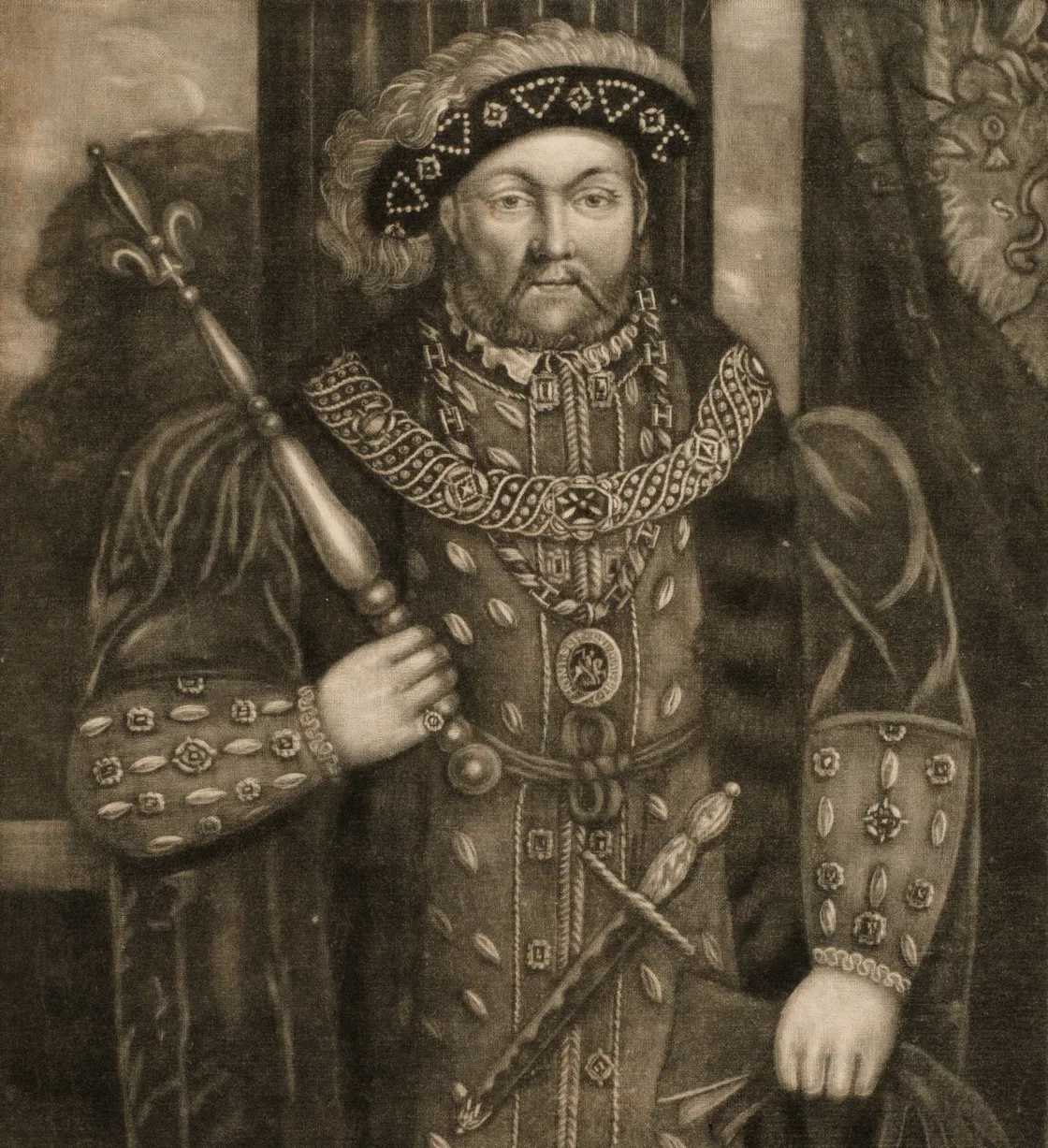
King Henry VIII.
Origins of Spitalfields Market
After the Great Fire of 1666, traders moved outside London’s city gates to sites like Spitalfields. In 1638, King Charles I licensed traders to sell flesh, fowl and roots in ‘Spital Fields’ and ‘Spital Square’.
In 1682, King Charles II issued a document called a royal charter to silk thrower John Balch, giving him the right to hold a market on Thursdays and Saturdays. The market flourished, encouraging more people to settle in the area.
Meanwhile, events in Catholic-ruled France would hugely impact Spitalfields and east London.
“The heart of England’s silk industry”
French Huguenots and Spitalfields silk
In October 1685, French Protestants, called Huguenots, were outlawed, and thousands of skilled craftsmen fled France to escape persecution.
The Huguenot refugees brought their silk weaving skills to England, with many settling in Spitalfields. The area became the heart of England’s silk industry.
By 1810, more than 10,000 silk looms operated around the market area, especially in Fournier Street, Princelet Street and Wilkes Street.
You can still see remnants of the industry in the Fournier Street houses, with large attic windows for loom work. A William Hogarth print in our collection shows what a weaving workshop would have looked like.
Spitalfields silks were used for aristocratic fashion and interiors for the elite. Examples from our collection include Ann Fanshawe's gown and a dress fabric designed by Anna Maria Garthwaite, who lived and worked in Spitalfields until she died in 1763.
Catering to varied communities
Over the centuries, Spitalfields Market served the area’s changing immigrant communities, with east London's affordability attracting settlers.
Irish weavers arrived in the mid-1700s after the Irish linen industry declined. Jewish migrants fleeing persecution followed from the 1880s onwards. Over the next 60-odd years, the area became home to one of the largest Jewish communities in Europe. Many of them worked in the cloth and accessories trade.
The increased population of the area enabled nearby local street markets to thrive, too. This included Wentworth Street, Petticoat Lane, Sclater Street and Whitechapel High Street.
Spitalfields Market also adapted and grew as trading increased to six days a week. Still functioning out of sheds and stalls, the market became a centre for fresh fruit, vegetables and general produce for the locals.
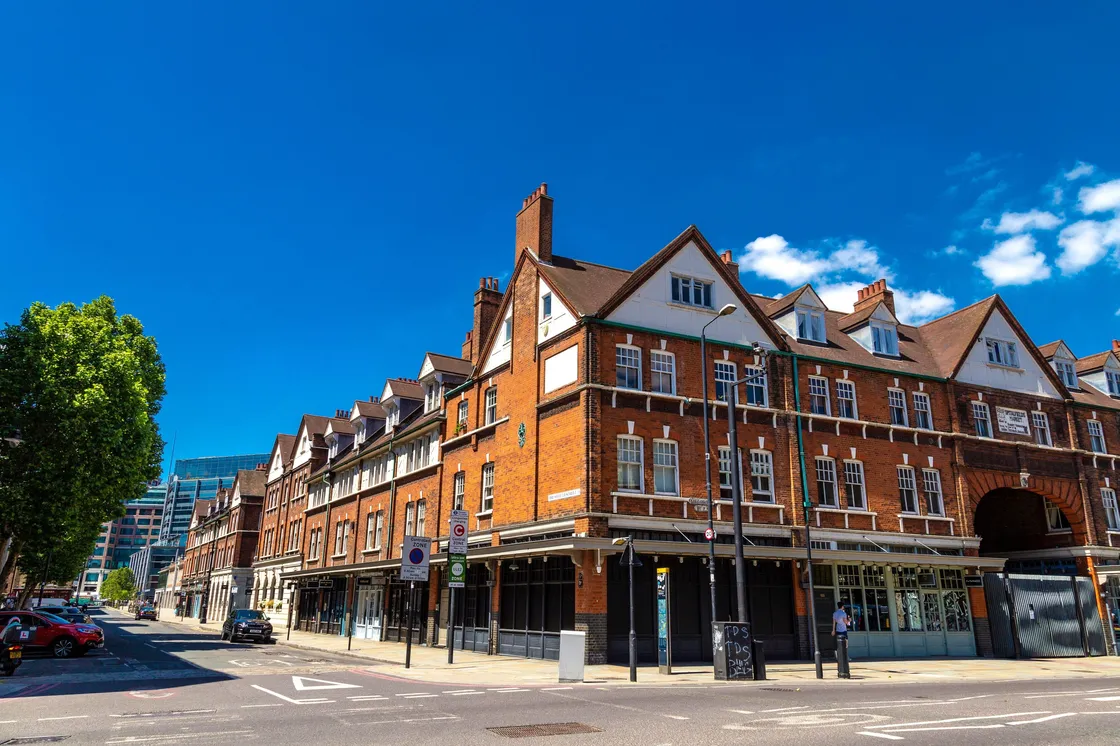
The exterior of the Victorian-era Old Spitalfields Market building.
Spitalfields Market’s makeovers
In the 1870s, Robert Horner, a former market porter, recognised the need to expand and modernise the market. He spent £80,000 (around £9 million today) redeveloping it, commissioning George Campbell Sherrin, the Metropolitan Railway's consultant architect, to design the buildings.
The upgraded market opened in 1893, featuring iron and glass halls surrounded by shops, and living quarters above. The rectangular space had red brick fronts and easy access to roads for produce movement on all sides. You can still see these Grade II-listed buildings.
“Pyramids of glossy apples and glowing oranges”
In 1920, the City of London Corporation bought the market from Horner and spent £2 million (around £77 million today) expanding it. In November 1928, Queen Mary opened the revamped Spitalfields Market amid “pyramids of glossy apples and glowing oranges”.
At this time, the market changed from a general market for the local community to a wholesale one, serving local fruit and vegetable shops, and restaurants.
Increased traffic marked a move to Leyton
As a wholesale market, Spitalfields attracted businesses from further afield, like greengrocers and restaurants who drove their vans into the area from Essex.
Hand-drawn barrows were also replaced with larger trucks arriving with larger quantities of goods. This caused traffic congestion in the narrow streets around it.
There was no more room for expansion. So, much like the relocation of Billingsgate Market from the City of London to the Docklands in 1982, Spitalfields moved east to a purpose-built space in Leyton in 1991. The ‘New Spitalfields Market’ opened with 115 stalls dealing in fruits, vegetables and flowers.
Archaeological excavations at Spitalfields Market
Back in Spitalfields, the old building was, once again, put up for redevelopment. This presented an opportunity to excavate the archaeologically rich site. The excavations were led by Museum of London Archaeology and lasted 30-odd years.
The project uncovered a Roman cemetery, the medieval priory and its churchyard, resulting in one of the UK’s largest cemetery excavations. Over 10,500 skeletal human remains from the 12th to 16th centuries were uncovered.
London Museum now cares for these remains – including the Roman ‘Spitalfields Princess’, whose unique burial contained some rare European grave goods.
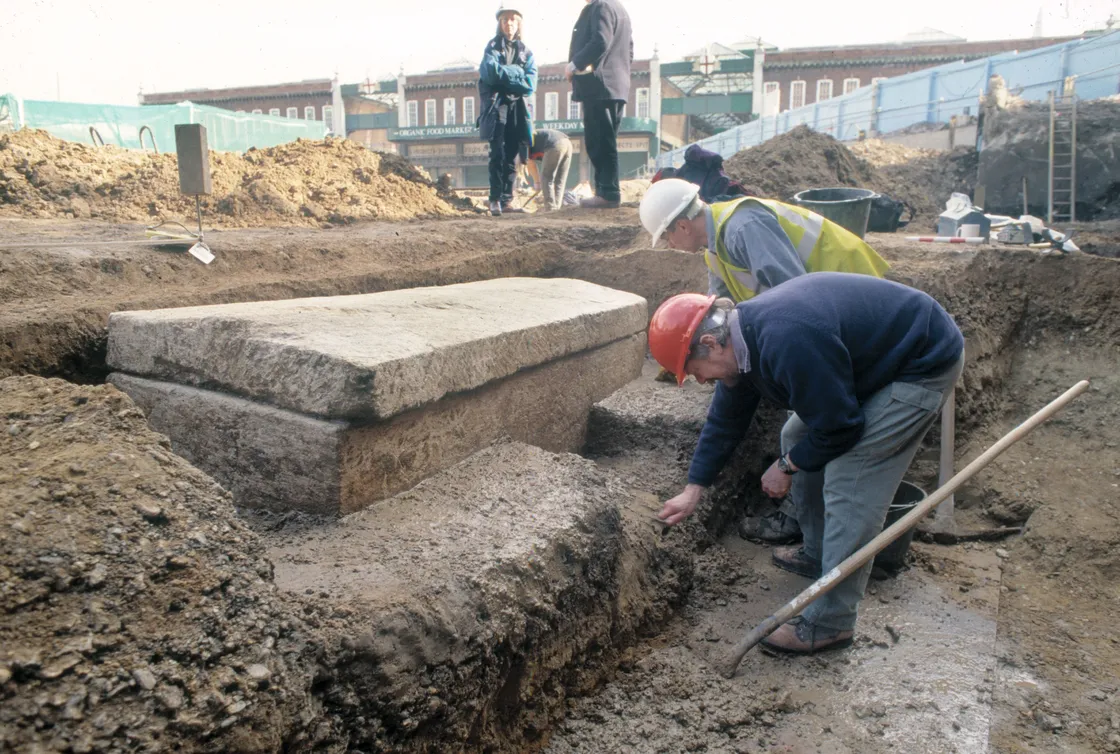
The stone sarcophagus belonging to the Roman ‘Spitalfields woman’ being excavated at Spitalfields Market in 1999.
Objects from refuse pits – like china, cutlery, and animal and plant remains of meals – have also helped weave the market’s almost 400-year-old history.
Old Spitalfields Market today
The new market building was completed in phases. Horner’s Victorian buildings, now given Grade II status by Historic England for their historic importance, were also restored.
In 2005, Old Spitalfields Market, as it’s now known, officially reopened as an indoor, artsy retail and food space open seven days a week.
The market, like Spitalfields more broadly, has undergone significant change in recent decades. Vintage stalls, boutiques, upscale shops and restaurants have transformed its character.
But rising rents have also forced some long-standing traders out, mirroring the rapid gentrification of surrounding areas like Bishops Square and Brick Lane.

